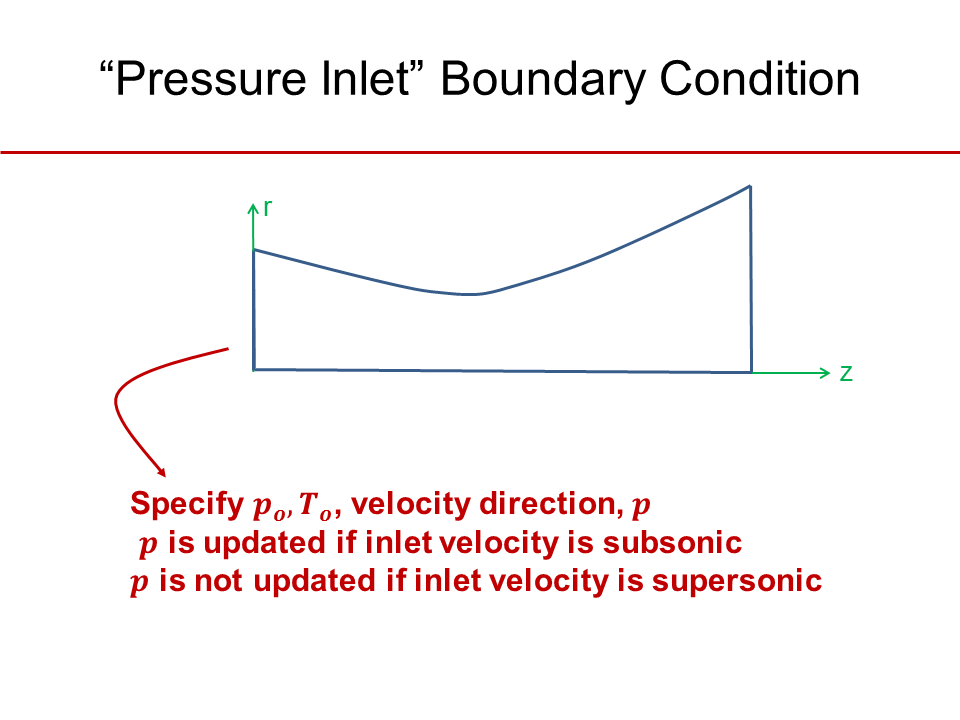Physics Setup - Lesson 5
The following video will walk you through specifying the governing equations and boundary conditions for our analysis.
The gauge total pressure at the inlet boundary is the total (stagnation) pressure. This value is taken as is. The supersonic/initial gauge pressure is an initial guess for the static pressure at the inlet. This value will get updated if the flow at the inlet is subsonic. This value will not get updated if the inlet velocity is supersonic since disturbances cannot propagate upstream in this case. In our problem, the inlet velocity is going to be subsonic, so the static pressure at the inlet will get updated. You just need to make sure you provide a reasonable initial guess for the static pressure so that the iterations converge. This is illustrated in the figure below.

Keep in mind that all pressures you enter are gauge pressures and that: Absolute pressure = Gauge pressure + Reference pressure. The reference pressure is set to zero under "Operating conditions" in the above video. So, there is no difference between gauge and absolute pressures. This is a good idea for highly compressible flows where one gets significant variation in pressure across the domain. In contrast, for low speed flows, where absolute pressure variation might not be significant, giving a reasonable reference pressure will ensure that gauge pressure variations are still significant and minimize rounds-off errors (essentially you avoid having to take small differences of large numbers).
Note: If using a different fluid than air, you must assign the material under the cell zone conditions. Do this by going to Cell Zone Conditions, clicking on 'surface body', selecting the material name that you want, and clicking OK.
